Single Shelters for the Victorian Volcanic Plains, 2011
This artwork is free.
A link to download as a pdf file (1.1 mb) can be found here.
Open the pdf 'single shelters' and print thsee two A4 pages (landscape print set up) as one double-sided A4 ( b+w) and fold to make a DL size instrucion manual. The pages are numbered indicating the way to fold.
To participate in the project make a shelter. A list of recycld tile suppliers is on the brohhure.
Email images and information for inclusion in the shelter map.
Map of shelters - view the location of shelters, to add a shelter to this map email images and location
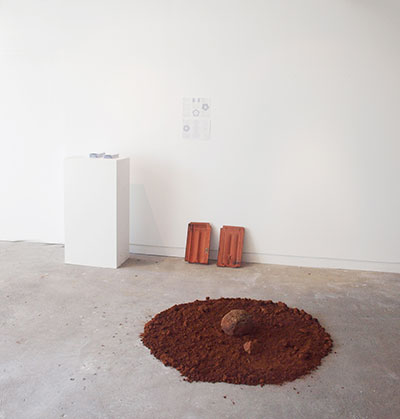
single shelters in exhibition context: volcanic soil from VVP, bluestone rock, 2 terra cotta tiles, folded instruction manuals (to take away) and the 2 pages of the manual attached to wall
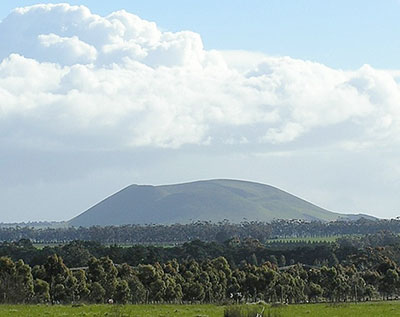
mt elephant, near derrinallum
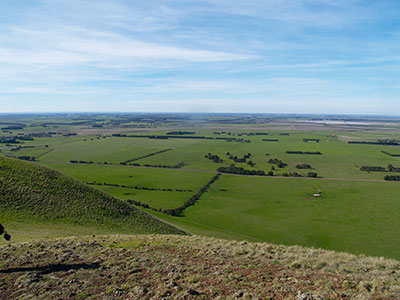
top of mt elephant
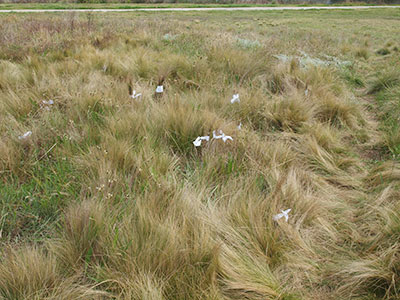
tagging remnant species amongst serrated tussock weeds at iramoo grasslands
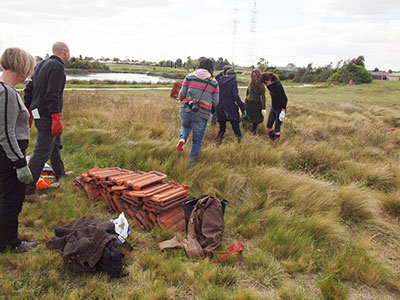
public art students from rmit help
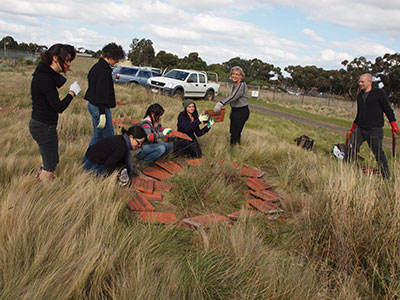
public art students from rmit
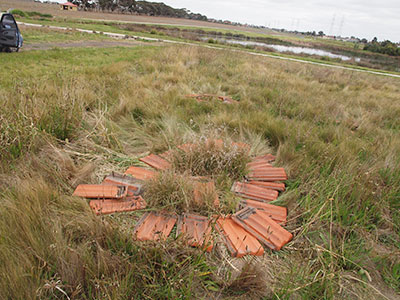
trial shelter contruction surrounding kangaroo grass tussocks

trial shelter contruction tiles angled to channel rainwater towards the plants

inspection of artwork by grassland cricket
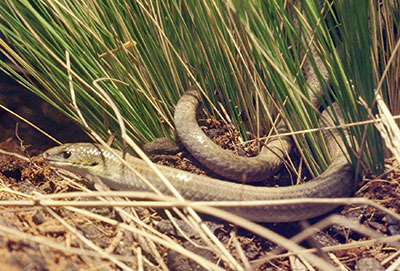
Striped legless lizard (about the scale of a pencil)
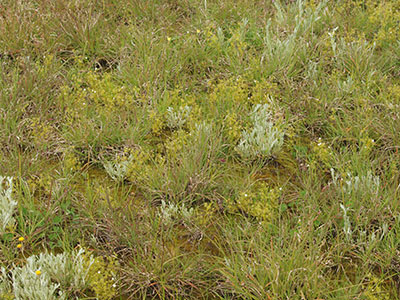
an example of healthy grassland site near mortlake, this is what the Iramoo site
would ideally look like without weeds, at the end of winter
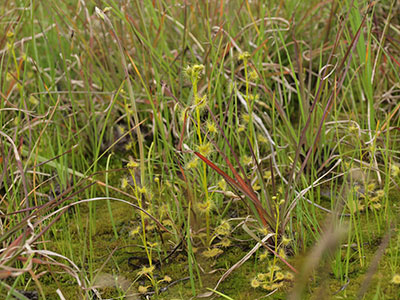
close up of an example of a relatively healthy grassland near mortlake with mossy
undercover and a variety of native herbs.
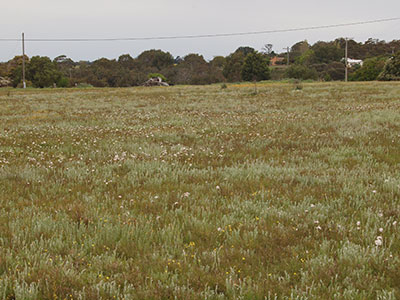
example of healthy, exceptionally good quality grassland site near mortlake

example of healthy grassland next to rokewood cemetary
Single Shelters, 2011
Single Shelters , is an instruction-based public artwork that is freely available , itcan be downloaded here (at the link to the left).
It was developed with volunteers and grassland specialists during a residency at Iramoo Native Grasslands in St Albans and informed by discussions with a variety of other specialists working in the field of grasslands conservation and management throughout the VVP (Victorian Volcanic Plains) during production of the exhibition Volcano Dreaming ( www.v olcanodreaming.com.au).
The Victorian Volcanic Plains...
These are called the Volcanic Plains because they have been created by a series of lava flows over the last two million years, which covered most of the earlier landscapes. These flat to undulating plains extend from the west and north of Melbourne more than 300 kilometres west, past the town of Hamilton, to Ararat in the north and Colac in the south and cover about 10% of Victoria.
Alternatively known as grasslands, flowerlands or even herblands the plains are characterised by large open areas of grasslands, small patches of open woodlands, stony rises (small rocky hills), volcanic cones, and many permanent and temporary shallow lakes and wetlands. The plains lie mainly on basalt rock and basalt clay soils produced from the volcanic larva flows and ash, and are very new by geological standards, having been laid down between five million to as recently as ten thousand years ago. (1.)
Since the arrival of the Europeans in the early nineteenth century, this natural landscape has been transformed dramatically, extinguishing much of the original flora and faunas. Some animals and plants have been driven to extinction, while the existence of many others is marginal and severely under threat. (2.) The VVP is one of the world’s most endangered ecosystems, with less than 0.01% of pre-european species remaining it is under constant, active threat. One important example being the current expansion of Melbourne's urban growth boundaries. (3.)
Single shelters arose from the question, a purpose of the residency: how to make a public artwork within this place?
When anything is added to or taken away from any environment that activity effects multiple systems and the remnant system of the VVP are particularly fragile and vulnerable.These remnant species exist in patchy and isolated pockets and many are critically endangered.
One such species, the striped-legless lizard (4.), is currrently being relocated to make way for new housing and other development. The lizards find it difficult to adjust and to fend for themselves in a new location, generally the plains plant species don’t surviive the process of translocation.
Even within relatively intact and stable remnant sites the isolation of gene pools, through a lack of connectivity with other remnant patches, retards healthy development and natural resistance of multiple species. The reduction of diversity destroys complex relationships and leads to extinction.
The format of this artwork is a brochure that describes how to create an artwork/sculpture on to any environmentally degraded site within the Volcanic Plains (including private gardens, nature strips etc.) by using recycled terra-cotta roofing tiles to construct small shelters that provide three main constructive functions to the VVP. The shelters provide habitat for remnant flora and fauna species; can also be used to smother and eradicate weeds and to re-establish indigenous plant species. The instruction brochure describes a process of maintenance and expansion of the shelters to develop and establish a native garden on any degraded site.
Editing, feedback and advice from grassland and remnant species specialists was essential to this project and was generously provided by a number of people who are credited on the brochure. In particular I would like to thank Dr Megan O'Shea, Dr Debbie Reynolds, Amanda Dodd, Liz Fenton and Rick Van Keulan.
Testing and developing the artwork took place at Iramoo grasslands in 2011 on an area containing a few broadly scattered remnant species (mostly Kangaroo grass) struggling to persist and being over-grown and infested heavily by serrated tussock weed (5.). Prototypes were constructed in a variety of shapes and sizes according to the location to support the remnant species. The location of these plants shaped the sculptures.
The prototypes were made with assistance and support of two artists: Dave Waters, who supplied and delivered materials (400 recycled roof tiles from the redevelopment of a local town Hall) and a visiting Brazilian environmental artist, Ana Amorin, who offered to help construct the trial versions of the artwork over a two month period. RMIT public art students and some local passers by also helped.
Tiles were chosen as a material for several reason. The baked terra cotta is safe to introduce to the grasslands environment, it is an inert material and these types of tiles are often laid out in fields by scientists conducting reptile surveys, longer term perspective is that as they eventually breakdown and integrate with the soil they wont add anything harmful to the system itself. These tiles can be easily stacked and moved about and recycled and broken versions are readily available. A key element of the degradation of grassland species being that rocks were and are still so often removed from fields through farming. The tiles imitate the role that rocks once played by providing habitat, soil moisture retention and stability. Lastly the tiles can be used to block sunlight from weeds, like a form of weed matting, smothering and eventually killing the weeds.
After tagging the remnant plants with ribbon the serrated tussock was pulled back away from each native plant and flattened and held down, section by section, with a base layer of tiles. A second and sometimes a third layer was added and the tiles were tilted in towards the remnant plant to channel rainwater towards the base of each plant.
After a few days many creatures including a Blue-tongued lizard moved into the tile shelters. The shelters attract insects and small rodents and especially reptiles as the tiles are warmed by the sun and provide a food source. After a few weeks we moved the tiles back slowly giving the remnant plants room to spread out and grow.
The serrated tussock was slowly dying but the biomass of this invasive weed is immense and even the dying sections of the plant seemed to smother the earth, they would take a very long time to decompose. To be affective getting the timing right is most important in order to smother the weeds before they produce seed heads.
More to follow.
(1. + 2.) www.v olcanodreaming.com.au
(3.) information about urban growth boundaries and grasslands is posted here by the Victorian National Parks Association, an organisation working to preserve the environment
4.) more about striped legless lizard here
(5.) more about serrated tussock here













